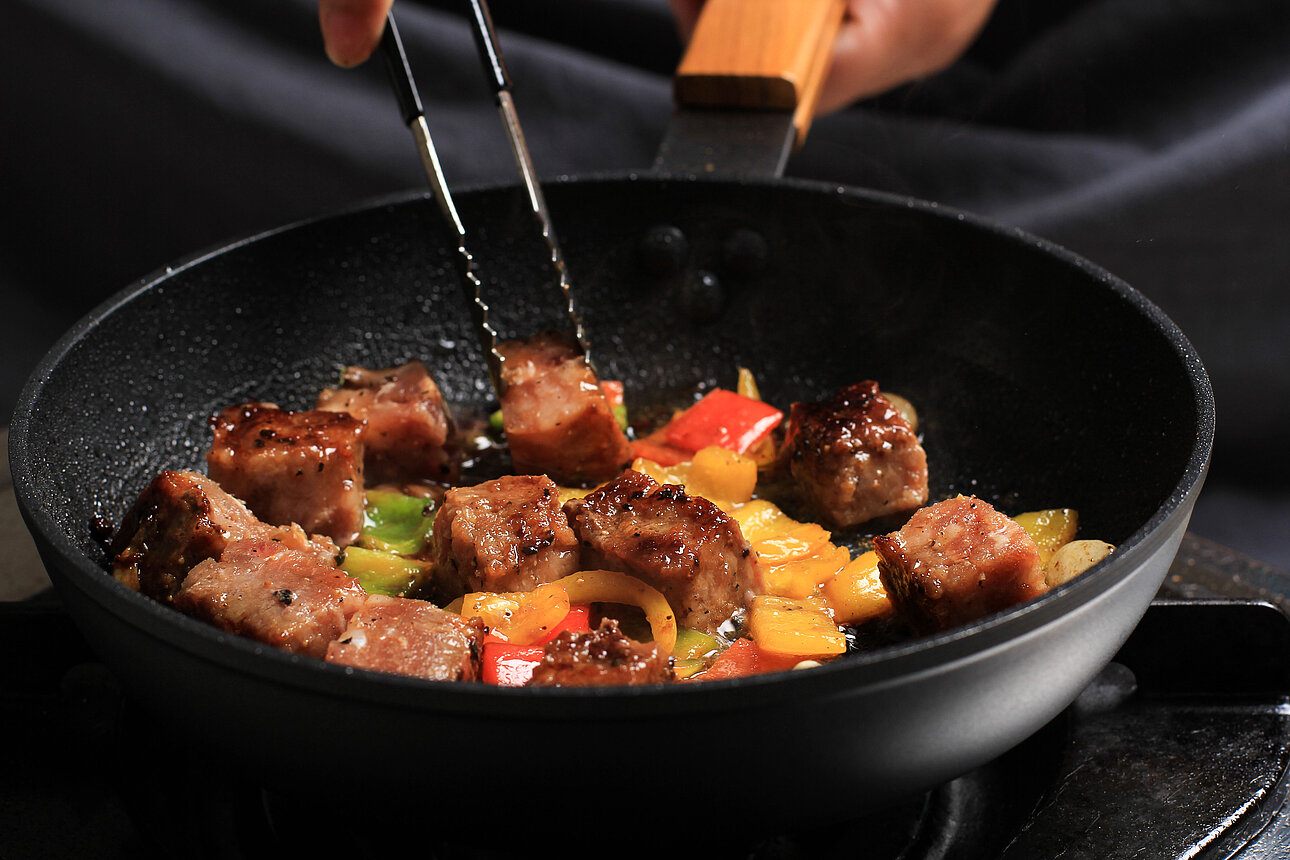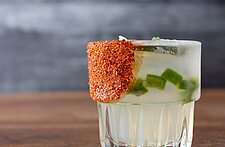Diced and fresh meats are full of protein and delicious flavor. When they're seasoned, their flavor reaches new heights, tantalizing the taste buds and bringing consumers back for more. What are the trends we’re seeing in 2023 for diced meat seasoning flavors across different meats? Let’s find out.
Beef Flavors
Smoke is the top beef flavor seasoning hitting retail shelves since 2020. Appearing in 4.8% of beef product launches, smoked beef adds woodsy notes, deepening the flavor profile and heightening the complexity. The next highest retail launch is Italian seasoning at 1.2%, followed by a three-way tie at 1% for hardwood smoke, roasted meat, and marinade. We see additional retail products show off bold flavor and heat with peppercorn, garlic and pepper, and rich BBQ.
What about the most common beef seasonings overall? Onion at 19.3% takes the top spot. There’s strong interest in the pungent yet subtly sweet flavors that onion imparts to beef, with consumers maintaining their love of this combination over time. Close behind is pepper at 13.5%, with chili peppers and spicy heat at 12.4% each.
Asian flavors also come in strong. Chinese flavors sit at 12.8%, showing high consumer demand for salty, sweet, spicy, and sour ingredients. Fiery heat is a beloved part of that flavor, often from Sichuan peppercorns. Mexican, tomato, and garlic flavors round out the most common beef flavors across the food industry since 2020.
The fastest-growing meat flavors branch out more as consumers sample and fall in love with flavor innovations. Sage seasoning, with its punchy herbal notes, is the fastest growing at 19.2%. Sweet and nutty coconut comes in at 17.2%, highlighting people’s interest in enjoying diced and fresh meat enhanced with creamy, satisfying seasonings. We also start to see more spice on the list, with the tangy punch of sriracha at 16.7% and heat-filled chorizo at 15%.
Operator Menus
How does beef seasoning change over the operator lifecycle? At high-end or independent restaurants, we see a preference for complex but refined ingredients, especially cedar smoke, walnuts, yuzu, Gouda, and almonds. Some punchier flavors from peppercorn or ginger appear as well. Mainstream or fast casual establishments tend to focus more on time-tested consumer favorites, like chipotle, garlic, sour cream, jalapeño, pepper, tomato, parmesan, and blue cheese.
Find more trends in our weekly newsletter HERE
Pork Flavors
When we look at fresh meat seasoning for the top retail pork flavors, we see several intriguing insights. One of the most noticeable is that spicy, smoky, and fiery ingredients are taking over. Clearly, consumers want heat and smoky richness. There are slight differences between product launches and top flavors, showing how consumers help shape restaurant and retail trends.
In terms of recent product launches since 2020, 5% focused on smoked pork and 3.9% on applewood-smoked pork. Not far behind at 3.2% is Italian flavor, with its blend of basil, marjoram, oregano, other herbs, and black pepper. Along with bold hickory smoke, the variable smoky complexity of BBQ sauce, and the delicious way sweet flavors enhance pork, the next retail launches at 1.5% focus on heat, peppers, and peppercorns. Spicy meat seasonings enhance the flavor and impart a zesty heat.
Top meat flavors since 2022 focus more strongly on fiery heat, bold spice, and rich umami tastes. Here, Chinese flavors top the list at 18.6% and show growing consumer demand for Sichuan peppercorn, soy sauce, sesame oil, and fragrant cinnamon and star anise. Also trending at 15.1% are spicy red and green peppers, followed by BBQ at 10.7% and sweet at 10.6%. Garlic and onion, at 8% and 7.8%, respectively, round out the top pork flavors, adding earthy complexity with sharp, pungent notes. Further top flavors start to infuse Mexican tastes, tangy tomatoes, and sweet-and-sour blends.
What about emerging meat flavors? The fastest-growing pork seasonings tend to focus on other taste sensations. Sweet seasonings are in the top spot at 18% and savory at 15.6%, with miso and Japanese flavors at 13.3% and 11.6%, respectively.
Restaurant Preferences
Operator preferences for pork meat seasoning depend on the type of establishment. Looking at fine dining restaurants, we find that pork dishes are more likely to feature flavor profiles with Vietnamese, Greek, Hawaiian, or French ingredients, along with sweet and creamy caramel notes.
While high-end casual begins to focus more on stronger flavors — think truffles, apricot, blue cheese, Indian, or Brazilian — more mainstream establishments shift toward Mexican, Latin American, citrus, rich cream, umami bacon, or tangy onion flavors.
Chicken Flavors
Since 2020, emerging retail products have been innovative with chicken meat seasonings. Across all diced and fresh meats, this is where we see the widest variety of flavors. In terms of flavor profile, everything from hot and spicy to ginger and sesame to basil and pesto appears on shelves. Other popular product launches focus more on sweet sauces, Italian herb blends, and fruity mango marinades.
With top seasoning flavors, whether on store shelves or restaurant menus, the salty, spicy, and tangy flavors of Chinese cuisine sit at 18.5%, with spicy peppers close behind at 15.4%. We find that Mediterranean and Italian flavors are also common, creating a delicious seasoning blend with oregano, basil, rosemary, turmeric, black pepper, paprika, and other fragrant herbs.
The fastest-growing meat seasoning innovations are all about creamy textures, savory herbs, bold spices, and refreshing citrus. Cotija cheese, with its crumbly feel and robust flavor, earns the top spot with 24.4% growth, while sweet melons with their subtle musky notes come in second place with 20.8%. Other fast-rising seasonings are rich in savory herbs and bold spices, with fruity and citrusy flavors making their way up at 15.4% and 14.7%, respectively.
Related: Unlocking Culinary Secrets: Exploring Sous Vide Chicken Sausage
Restaurant Lifecycle Offerings
Cider, chestnut, mole, and raspberry tend to be top chicken flavors at fine dining restaurants, where the sweetness, richness, or savory crunch enhances the chicken proteins. Moving into high-end casual dining, there’s more focus on lemon herb, rosemary, red chili, apricot, and truffles, while mainstream and quick service opt for teriyaki, lime, pineapple, parmesan, and honey mustard.
Are you searching for more insights into the innovations and seasonings enhancing beef, pork, and chicken? Reach out to Symrise today.






